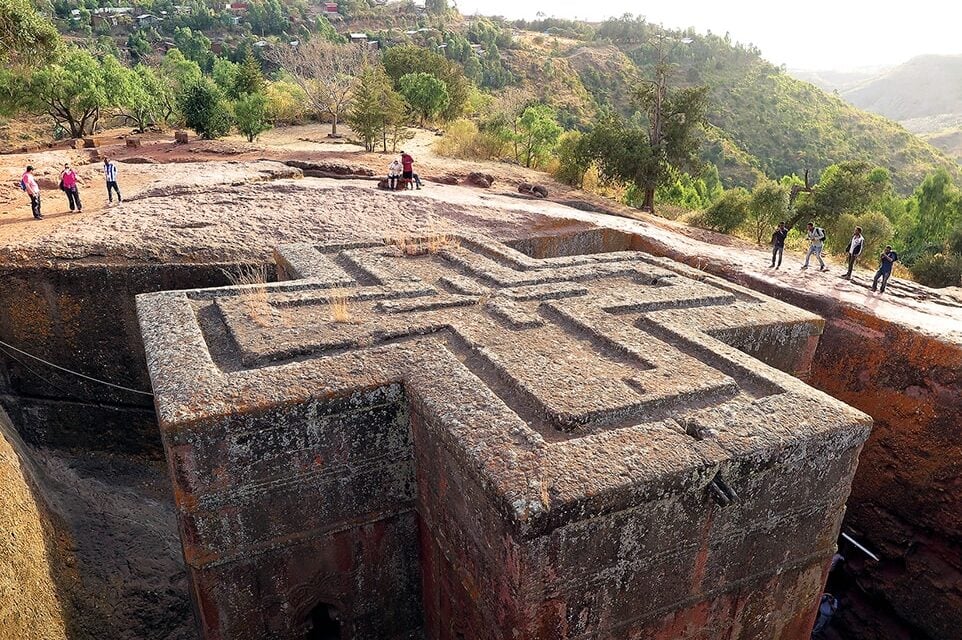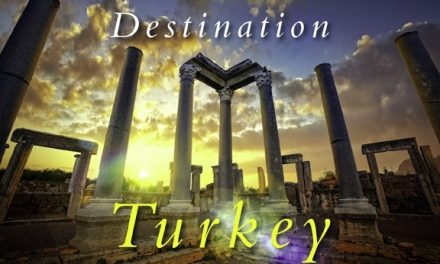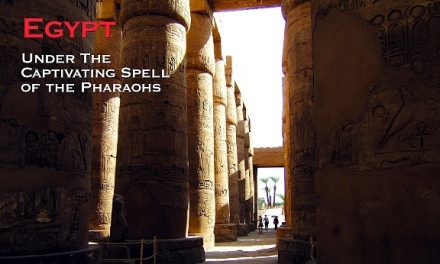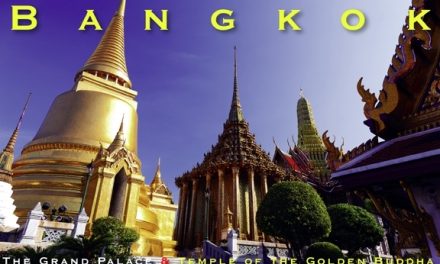Ethiopia
Eternal Ethiopia
Article and photography by Michael Morcos

Ethiopia has been on my bucket list for as long as I can remember. Twelve African countries later, it was finally time. As I would find out, it has a lot of similarities to other African countries with the abundance of wildlife, indigenous culture and stunning landscapes. But what makes it stand out is that the country can trace its long-recorded history back millennia.
On this trip we would visit the capital of Addis and the northern region to discover the major sites in Bahar Dar, Gondar, Axum and lastly, wonderful Lalibela.
Addis Ababa
As it is the diplomatic capital headquarters of the African Union, Addis is a very important place in Africa. We started our day by visiting the Entoto panoramic view of the city, where it’s magnificence was amplified by the contrast of its proximity to the countryside. This was clearly demonstrated by the many farmers with their donkeys collecting firewood from the forest.
The city is filled with artifacts and buildings that reflect its true age. We visited the Holy Trinity Cathedral Church, a beautifully decorated building and we arrived just as a mass was in progress. The priest and parishioners welcomed us and we were able to move around freely, taking pictures and enjoying this very unique experience. The building is also home to the remains of Haile Selassie, the long-time influential president of the country, who had also commissioned the building of the church.
More celebrated remains await at the national museum, where we would find the bones of the world famous ‘Lucy’ that date back millions of years. Seeing it was very moving, as she had walked this land when the world was new.
Continuing our tour, we would visit Ethiopia’s first hotel built in 1898, the Taitu. We were treated to some of the best coffee we have ever tasted. Before we got to drink it, we were treated to a wonderful coffee ceremony where the raw beans were roasted on a charcoal and then brewed to perfection. You really cannot get fresher tasting coffee.
Bahar Dar
In Bahar Dar we would take a boat onto Lake Tana (Africa’s second largest lake) to visit an island monastery. Along the way we passed a fisherman in a primitive looking canoe made of reeds with his catch, a humongous catfish.
Also in this lake, and very close to town, was something unimaginable and very dangerous. There was a large family of wild hippos that would occasionally surface to get some air then going back under water to graze on the aqua vegetation. They don’t look it, but hippos kill many more people than most African predators!
On the island, we would hike to visit the 14th century monasteries of Azwa Maryam. What a site this was, and we felt like we were transported centuries back to a simpler time. This Orthodox Church was completly and vibrantly painted from top to bottom with religious stories from the bible. Truly a work of art on its own.
Later that afternoon, we would take another boat to visit the majestic Blue Nile Falls. This fall has been dammed to create hydroelectricity, and our hilarious guide said he had phoned ahead to have the authorities turn on the falls. This ended up being true and with the flick of a switch the water was again running through the falls. As wonderful and powerful as it looked, it was the dry season and the full effect is best experienced in the late fall months.
Gondar
The following day we would take a long bus ride along the beautiful landscape of the Amhara region passing through mountainous terrain to get to the city of Gondar. The ride there was quite fun, and we would witness locals going on about their work in the fields and in small villages. We stopped to see how Ethiopia’s beloved bread called Injera was made as we watched an elderly lady who poured batter on a large metal plate over a wood pit, within a minute the bread was ready to serve.
Gondar is considered the ‘Camelot of Africa’ and was the 17th Century capital of Ethiopia. There we would visit King Fasilides castle, now a UNESCO World Heritage Site. It was a fairy-tale looking building that was apparently built in Portuguese and Indian styles. The complex included other buildings that were smaller in and belonged to the King’s children. Unfortunately, some of the structures were bombed and damaged during the Italian occupation, but there are plans to renovate and even rebuild these wonderful buildings.
Later we would visit King Fasilides bath, which was the largest pool I had ever seen. It was originally built as a place for baptisms. Now it is only filled once a year with mountain water for a yearly celebration when people from far and wide come for a week-long festival.
Axum, or Aksum
Aksum is a city in northern Ethiopia known for its tall, carved obelisks that are relics from the ancient Kingdom of Aksum. These obelisks are around 1,700 years old and have become a symbol of the Ethiopian people. A number of them are found in the Northern Stelae Park, which has the 110-foot-long Great Stele, believed to have fallen and broken during construction and now lies in pieces.
Another fascinating building is the centuries-old St. Mary of Zion Christian church and pilgrimage site believed to have housed the biblical Ark of the Covenant. The neighboring Chapel of the Tablet is said to contain the Ark today.
At the Monastery we would have an unbelievable surprise. Our Guide had already mentioned that the Arc was only seen and taken care of by one person and that was a hermit monk who was choosen not by priests but by God. On our way to the museum we would find the monk himself behind a fence, our guide asked if would not mind blessing us and in his gentle and joyful manner he came out and blessed the souvenir cross I had just bought from kids in the street. Not being very religious, I still found this experience memorable and still wear this cross.
Lalibela, the best for last
Considered as the the Eighth Wonder of the World, Lalibela was one of the main reasons I had always wanted to visit Ethiopia. The complexe was much bigger than I thought and seemed to go on in every direction.
Initally I thought there was just the Saint George church and that was it, but there countless other churches all built into mountains or straight down into solid rock. We would visit a few and be greeted by holy men in each, but the best and my favorite was the iconic Saint George built in the shape of a cross. I stood in awe and wondered on how men could possibly build such places only using primative tools.
My trip was now complete! I was drawn by Saint George but found a wonderful, fascinating country with a wealth of history and a unique culture. I guess now that I have visited the north, I must come back to see the south and be delighted by more Ethiopian marvels.
www.ethiopia.travel

















